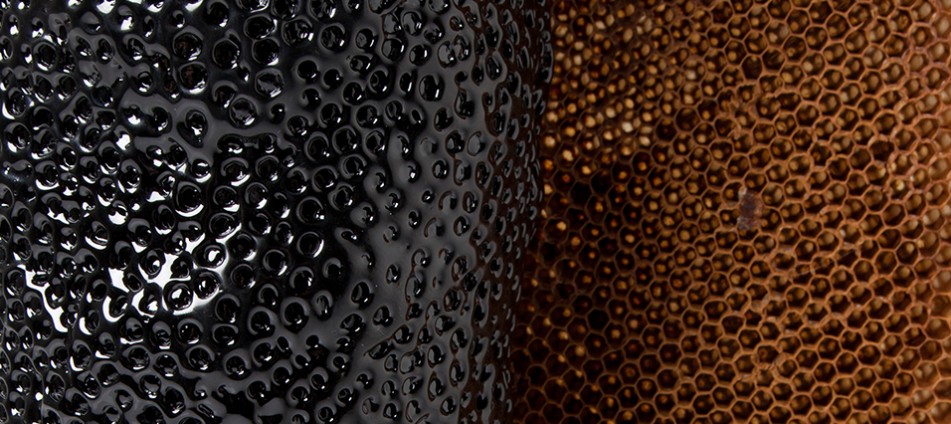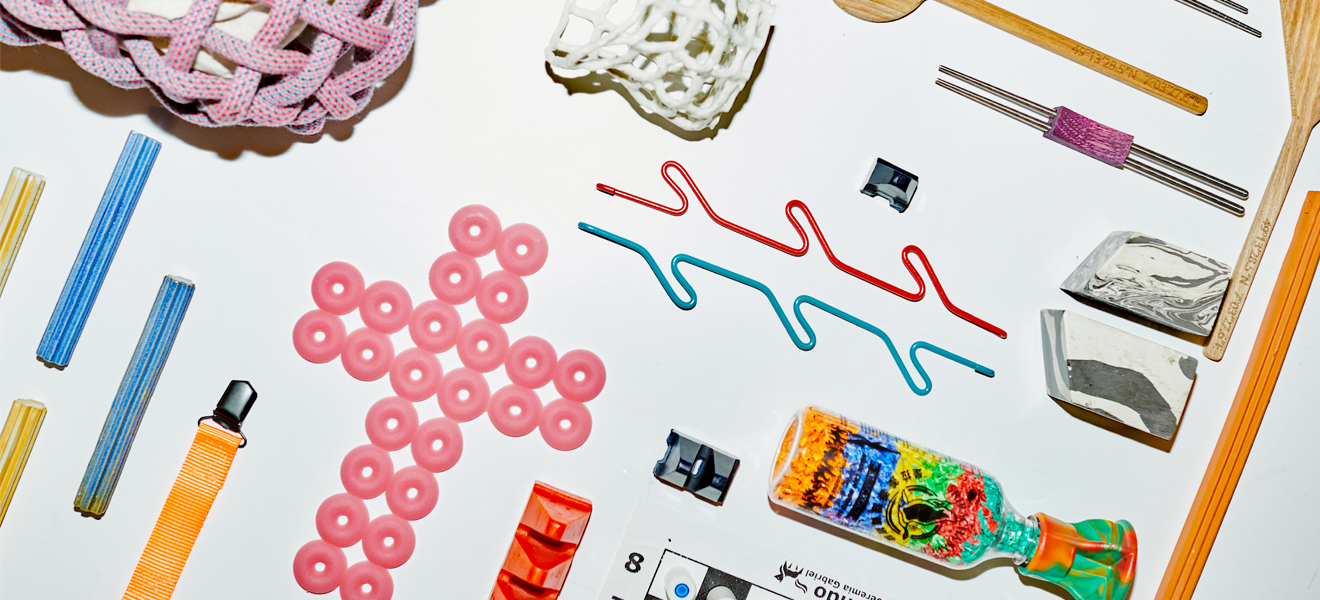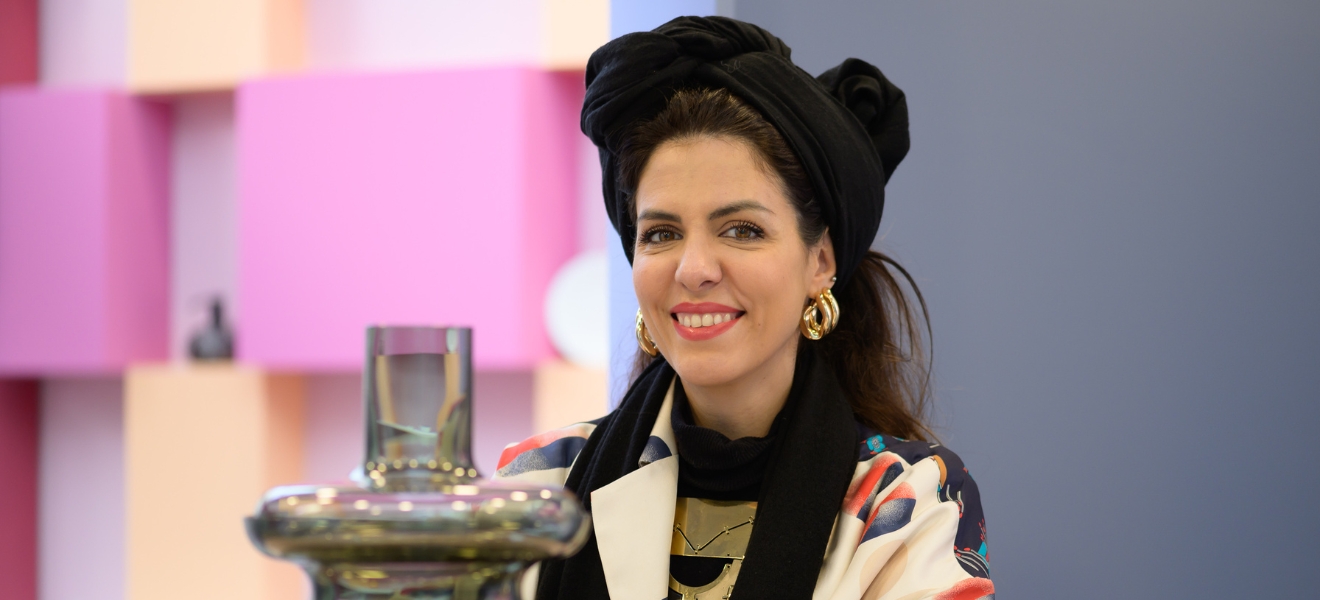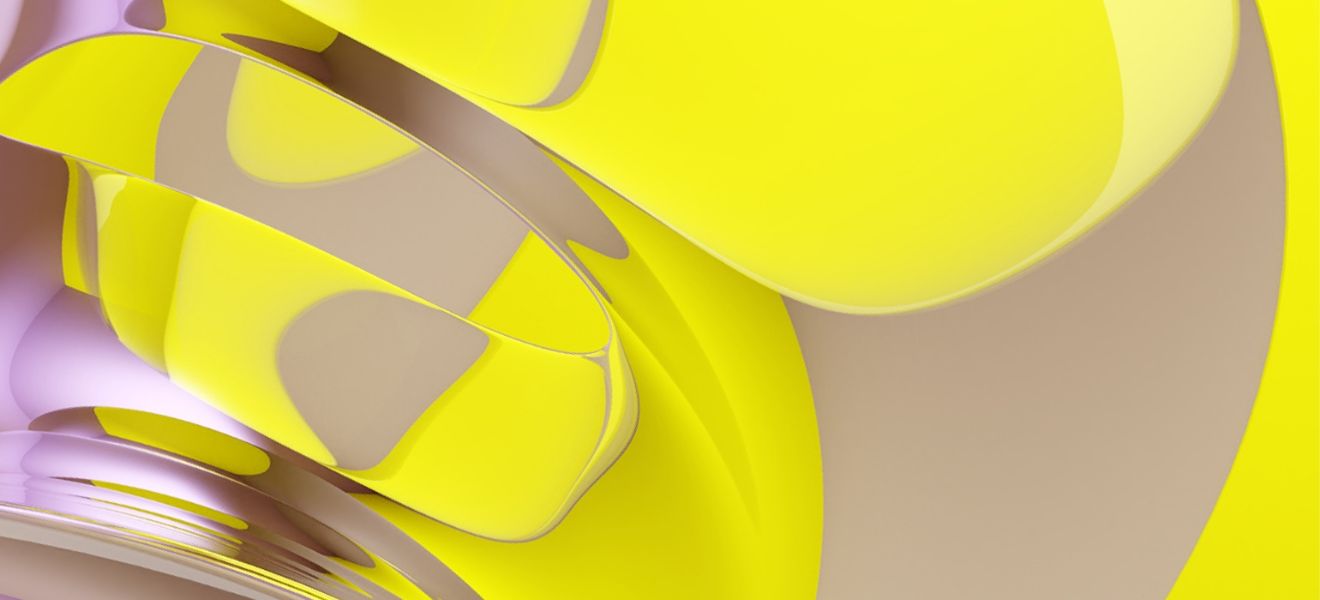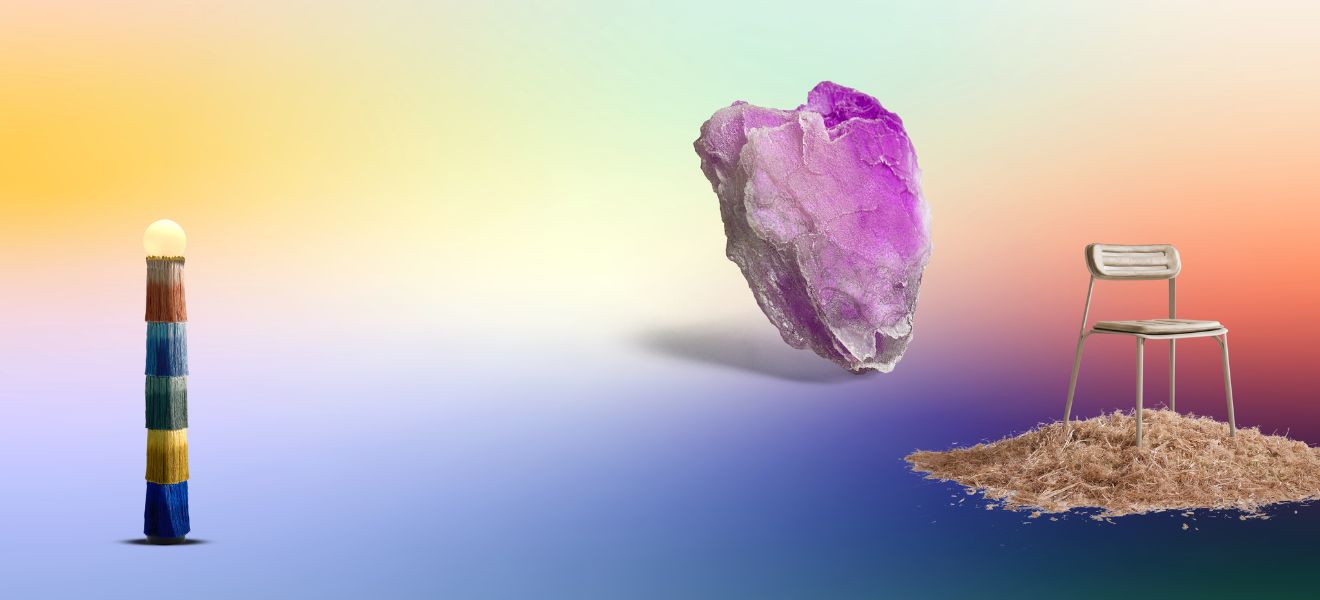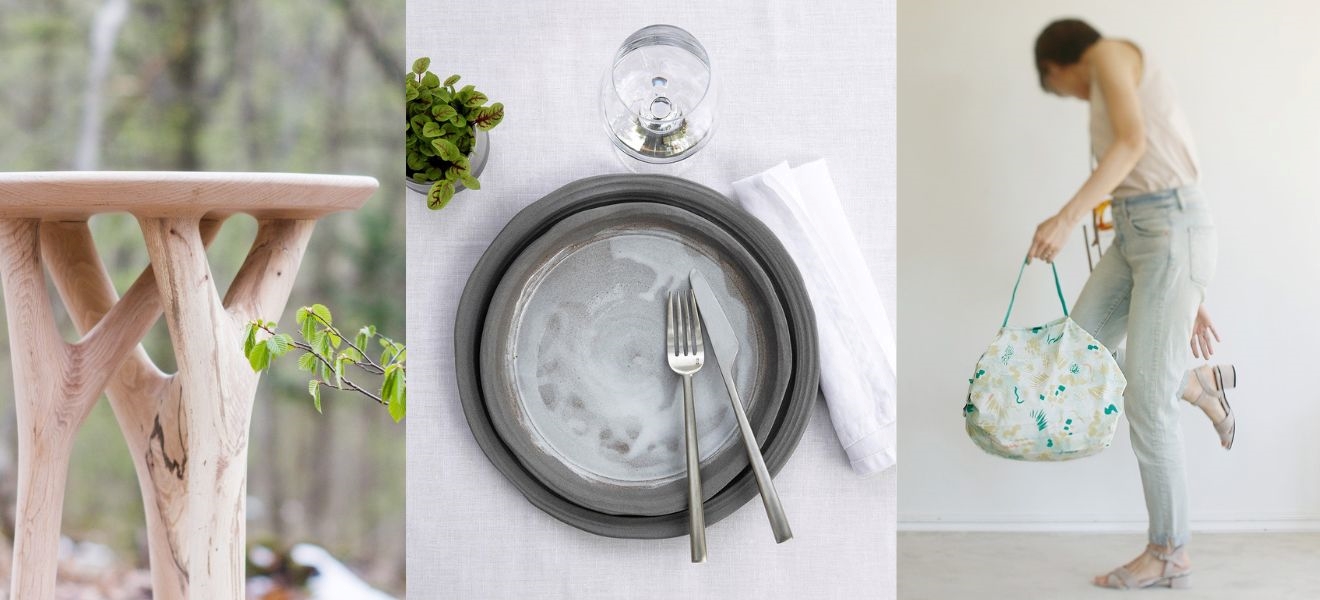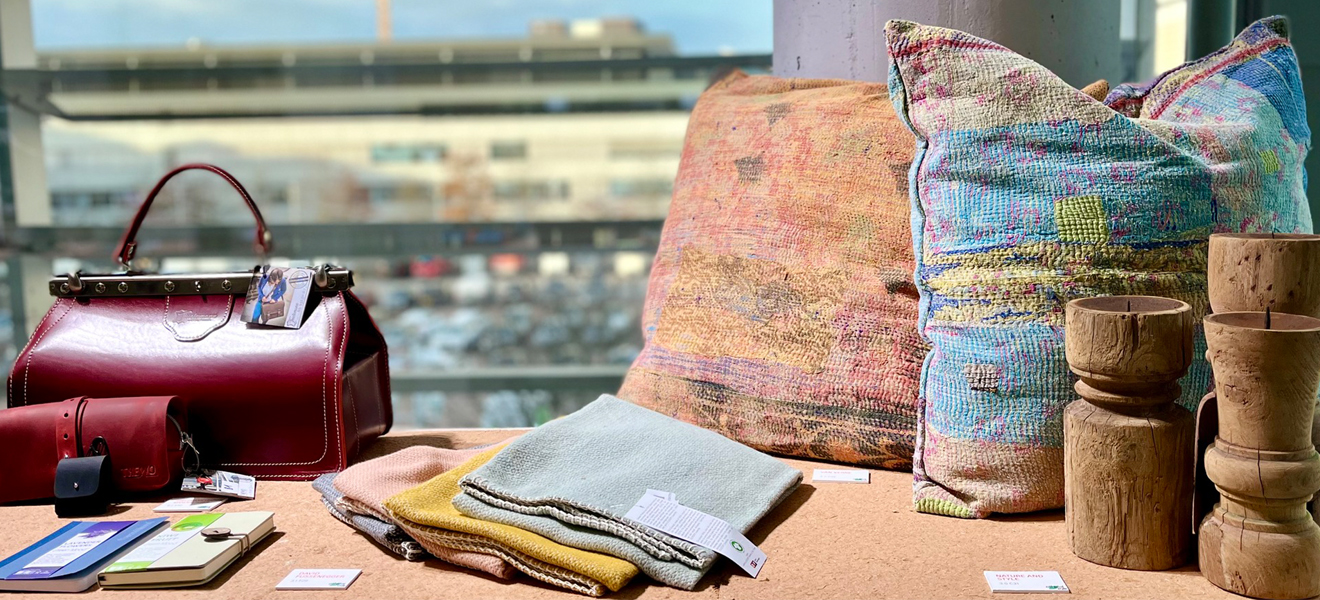Experimental designer Marlène Huissoud grew up with honey bees. The French-born creative processes ‘bee glue’ (propolis) into a unique natural material that can be worked like glass. This is a world first and has spurred her on to even greater feats.
In Huissoud’s London studio, she invents sustainable material solutions for furniture and interior design. ‘Bee with us’ on #TalentsTuesday.
To Marlène Huissoud, honey bees and silkworms are miniature designers. How do they do it? Their honeycomb and cocoons show that they obey the principles of utility and efficiency. Here, nature has perfected her design skills. It all follows a never-ending process, developed in a studio as old as the earth itself. It’s highly refined: first, bees build a tube. As they work on this, the beeswax warms to around 40 degrees Celsius. This is when the tube melts, and the familiar hexagonal shape forms. “Scientists research the potential of insects in food production; I’m mainly interested in using insects as companions during my design process”, says the textile artist. She comes from a family of beekeepers – her father has 500 hives. So the bees’ artistic ability is something Marlène has known from a very tender age. While still a student at Central Saint Martins School of Art and Design in London, Huissoud experimented with honeycomb and the extremely durable, resinous ‘bee glue’ known as propolis.
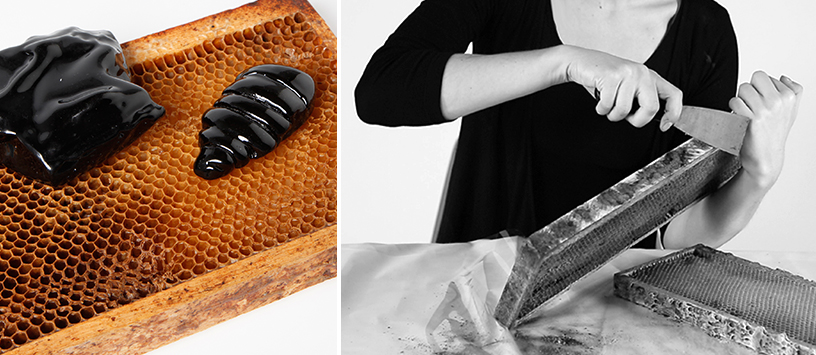
The small collection of vases she presented at Ambiente 2015 is also the product of her studies in materials. The project is entitled ‘From Insects’. At first glance, the objects appear completely carbonised – like young tree trunks after a forest fire – but come closer and you can smell the sweet honey aroma. It’s quite a contrast! Marlène Huissoud has used a rare type of propolis containing rubber tree pollen, that’s why the resinous substance is a deep black colour. She explains: “The object harks back to its arboreal origins, both in its form and in the hand-crafted surface”. How does the artist work with this tough material? The secret lies in heat, and in the material’s structural similarity to glass. “The black propolis can indeed be worked just like glass, I found that out by experimenting. Only by using a particular glass-blowing technique, which takes into account the much lower melting point of propolis, could I finally produce the shapes I wanted.”
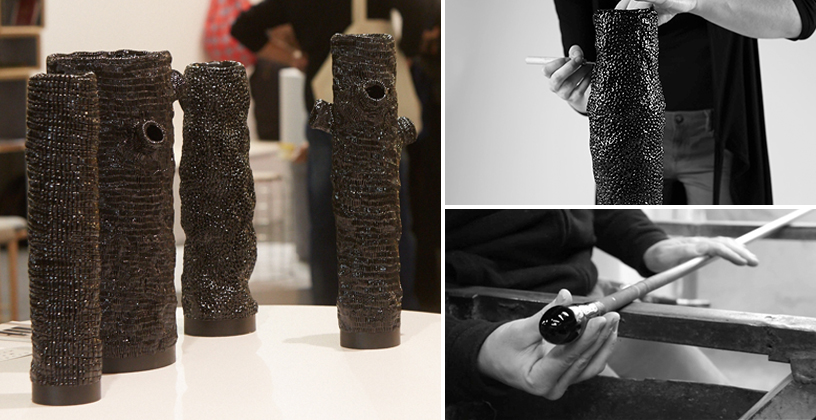
The second material Huissoud has developed, ‘Wooden Leather’, involves a species of Indian silkworm. In every cocoon lies, not only a metre-long raw silk thread, but also a natural adhesive (the protein sericin), which can be reactivated by wetting and heating. Thus Marlène Huissoud makes super-strength paper from the fibres. Once it has undergone final processing, it resembles thin leather or wood. “The surface is further reinforced with dark propolis. In this way strong material surfaces are created, which are interesting in furniture and interior design.”
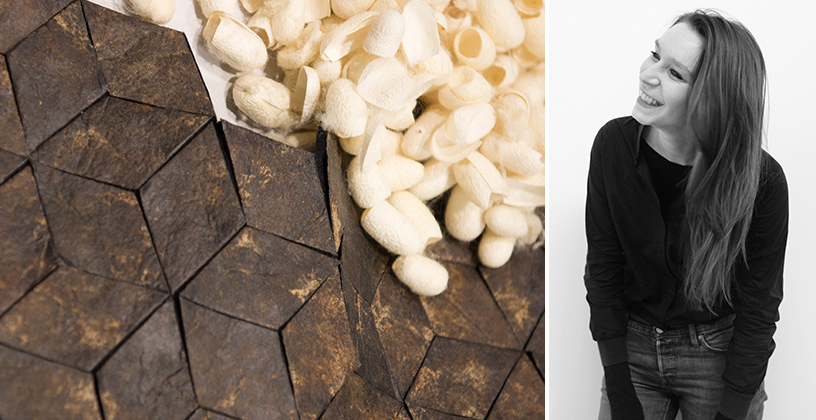
The designer sums up her studio’s philosophy: “I try to discover how we can produce valuable handmade artefacts from the insects’ natural waste products. I see the insects as partners”. It’s sensational that structures – and soon more – can be created from biological bee glue. It’s sure to cause quite a buzz. Perhaps propolis can give glass a run for its money? Marlène Huissoud has certainly started something.
